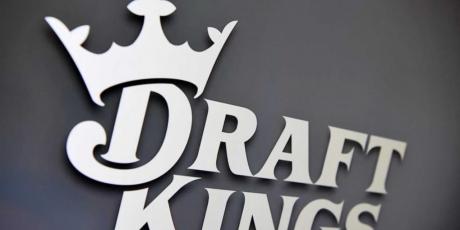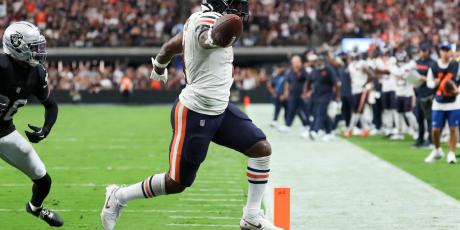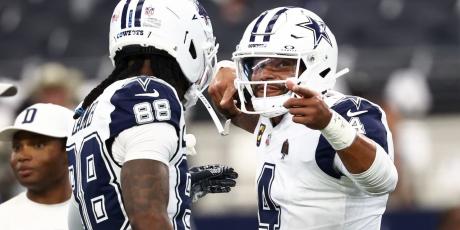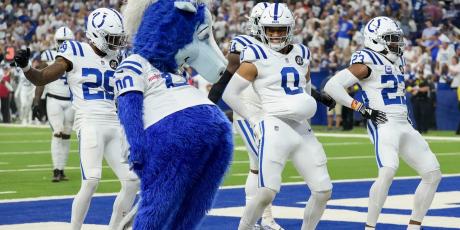Extreme Underdog Best Ball Roster Construction: When to Stop Drafting WRs
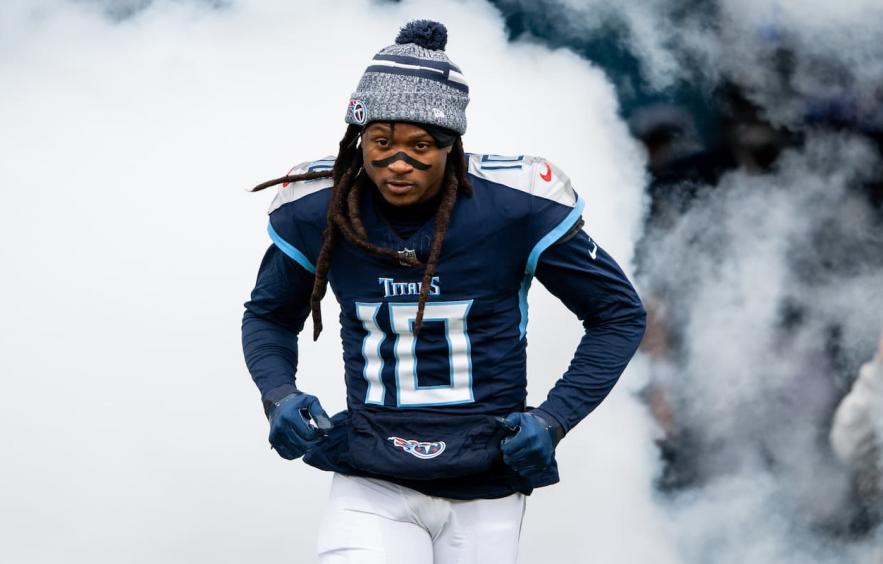
Death, taxes, and skyrocketing WR ADPs on Underdog. Unfortunately, these rising WR prices make a lot of sense. It’s been optimal to have at least four wide receivers through seven rounds in every year of Best Ball Mania. The profiles of these top-tier WRs cannot be found in the later rounds of drafts. Combine this with the poor performances of early-round QBs and TEs last year, and the result is WRs going earlier than ever. So, you need to draft WRs early to keep pace. But when should you stop?
Optimal Roster Construction
To answer that question, let’s first look at the most successful roster construction choices in BBMIV. The table below shows the nine roster constructions that were most popular last year. A reminder here that any playoff advance rate over 16.7% is a win. What you’ll notice is the top five roster constructions in the table below had advance rates above that benchmark. Additionally, 60% of the teams that made the BBMIV finals had one of these five roster constructions. But what happens if you veer off the straight and narrow path? That’s what we’re digging into today.
| Roster Construction (QB/RB/WR/TE) | Playoff Advance Rate (%) |
|---|---|
| 2/6/7/3 | 18.39 |
| 3/6/7/2 | 18.19 |
| 3/5/7/3 | 17.71 |
| 3/5/8/2 | 17.29 |
| 2/5/8/3 | 17.03 |
| 3/6/6/3 | 17.03 |
| 2/7/7/2 | 16.90 |
| 2/6/8/2 | 16.25 |
| 2/5/9/2 | 14.59 |
One important note is that the data we’re looking at today is descriptive, not necessarily predictive. I’ll reference this frequently, but solely because a strategy worked last year doesn’t mean it will work again. Having said that, there are some interesting trends from BBMIV that can carry over to this season.
Extreme WR Construction: Starting Six Straight WRs
Starting a draft with six consecutive WRs is not for the faint of heart. In BBMIV, 2,795 entries, or 0.4% of the field employed this strategy. And it worked very well despite only being able to play four WRs in a given week. Again, the data is solely descriptive. This strategy worked well partially because elite QB and TE strategies did poorly. There are only so many positions you can draft, and loading up on WR in this way allowed a drafter to avoid those QBs and TEs.
Anecdotally, more drafters are starting with extreme WR positions this year. And with those drafters in mind, let’s find out when you should stop drafting the position. The graph below shows the playoff advance rate of entries that started with six WRs. The x-axis is the total number of drafted WRs, including the six with which the entry started. The y-axis is the average playoff advance rate of those entries. What you’ll notice is that each additional WR drafted lowered an entry’s playoff odds. And six WRs is the first time where that was the case in BBMIV.
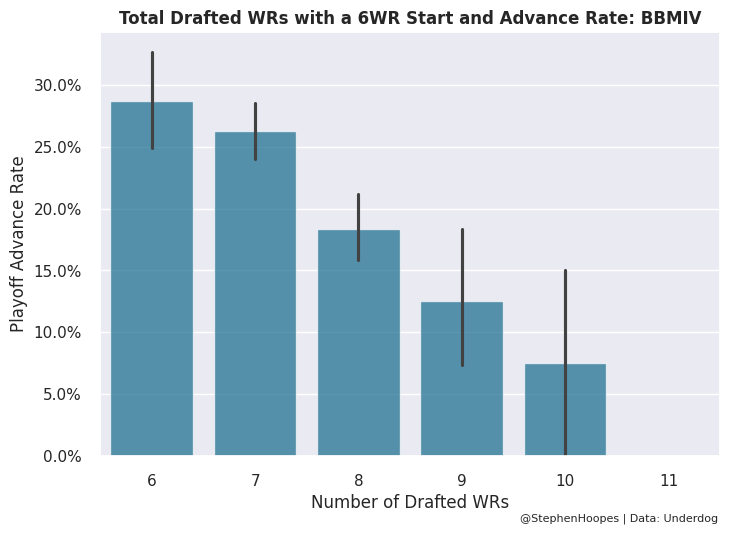
So, yes, taking WRs early is necessary in the current best ball landscape. But remember that you have to eventually stop. If the ninth and 10th WRs you drafted with this build are hitting your lineup, your entry is already dead. After your sixth WR, it’s finally time to take some RBs.
Extreme RB Construction: Starting Three Straight RBs
I know, starting a draft with three consecutive RBs does not sound very extreme. But it truly is given the current WR meta. In BBMIV, about 2% of all entries started with three straight RBs. And the advance rate of those teams was poor, to say the least. The graph below shows the playoff advance rate of entries that started with three RBs. The x-axis is the total number of drafted RBs, including the three with which the entry started. The y-axis is the average playoff advance rate of those entries. What you’ll notice is that each additional RB drafted lowered an entry’s playoff odds.

Now, stopping at a total of three RBs is an extreme stance. You have to start at least two RBs every week. There are bye weeks and injuries, in addition to players simply underperforming. But perhaps from a game theory perspective, this is optimal. By starting with three consecutive RBs with the current WR landscape, you’re making a massive bet that the RBs you selected are the nuts. That they’ll perform so exceptionally well, that they’ll overcome the opportunity cost of missing on the elite WRs that are not available later in the draft.
In full transparency, I have absolutely no interest in starting a draft with three RBs. But if you do, I would be very thoughtful about when and how many additional RBs you take.
Elite QB: When to Take Your QB2
I didn’t want to leave QB and TE completely out of this article. However, there isn’t much controversy over how many of these players to draft. In almost every scenario, I’m taking either two or three QBs and TEs. So instead of when to stop drafting these positions, let’s look at when you should pause after taking an early-round player.
For this analysis, I’m considering an elite QB to be one that you drafted in the first four rounds. The graph below shows the playoff advance rate of entries that drafted an elite QB. The x-axis is the total number of drafted QBs, including the elite QB. The y-axis is the average playoff advance rate of those entries. What you’ll notice is stopping at two total QBs was optimal in BBMIV. This was the only construction where drafters had an advance rate above our 16.7% benchmark.
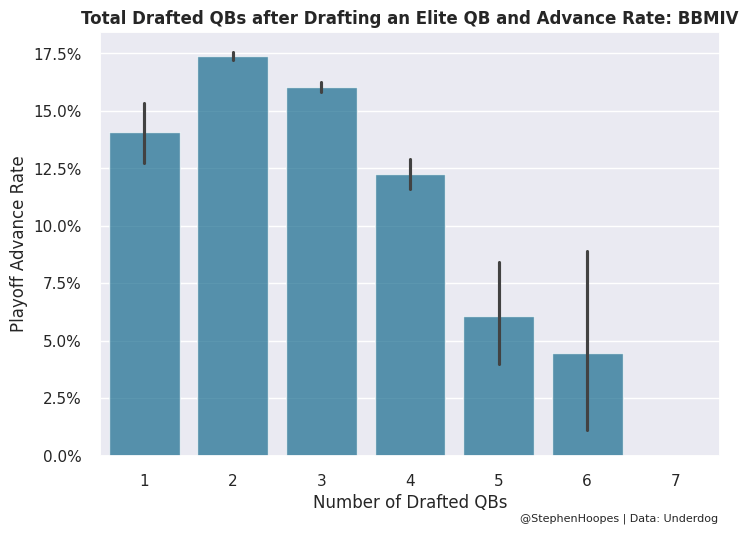
Let’s dig further into the elite QB teams that stopped at two QBs. At what point in drafts should those teams take their second QB? The graph below shows just this. The x-axis is the draft round where an elite QB drafter selected their second and final QB. The y-axis is the playoff advance rate of these entries. With the exception of a spike in Round 9 (Dak Prescott says hello), it’s a clear pattern. If you select an elite QB in the first four rounds of drafts, you’ve already invested a lot of draft capital into the position. You should draft as if that is the QB you need and wait until the deep double-digit rounds for your next signal caller. Starting in Round 13, be on the lookout for a QB that stacks with the WRs you’ve already selected.
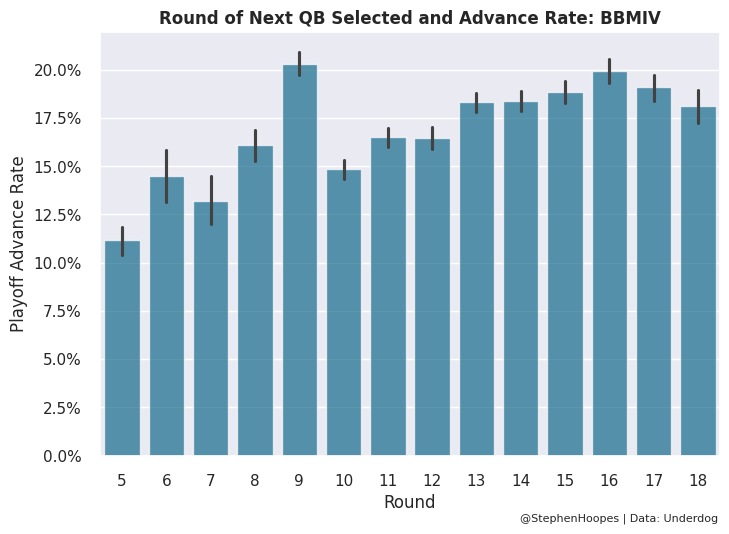
Elite TE: When to Take Your TE2
Just like with QBs, I’m considering an elite TE to be one that you drafted in the first four rounds. The graph below shows the playoff advance rate of entries that drafted an elite TE. The x-axis is the total number of drafted TEs, including the elite TE. The y-axis is the average playoff advance rate of those entries.
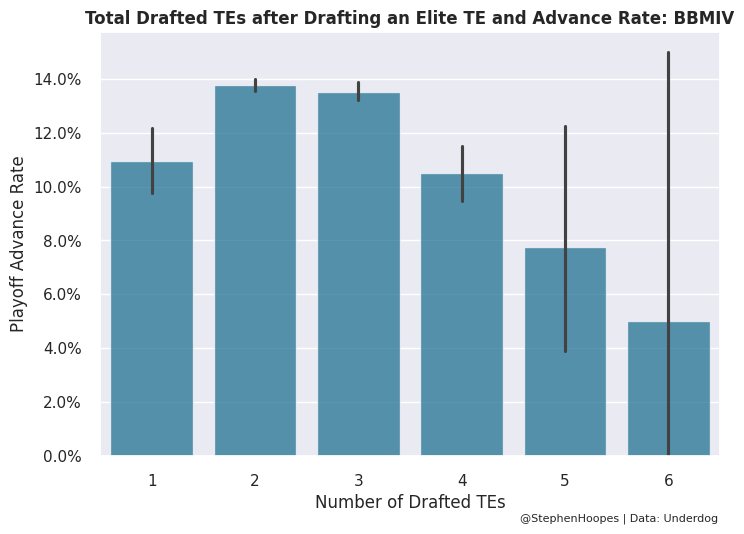
As mentioned previously, BBMIV was not the year for elite TE builds. The advance rate for every number of TEs was well below our 16.7% benchmark. And unlike with QBs, there wasn’t a clear optimal number of selected TEs. Stopping at two or taking a third performed almost equally well. However, stopping at two was slightly better so let’s focus on those entries.
The graph below shows the round in which the elite TE drafter selected their second and final TE. The pattern isn’t as clear as it was for QB. You see the highest values are through Round 6 and then a massive dip in Round 7. Individual players are skewing the results as is to be expected. You can see T.J. Hockenson in the first two rounds followed by Kyle Pitts (thanks Arthur Smith) in Round 7. But in general, there isn’t a clear pattern of when to take your second TE.

Bottom Line
1. If you start an Underdog draft with six straight WRs, stop there.
2. If you start an Underdog draft with three straight RBs, stop there.
3. If you take a QB in the first four rounds, wait until round 13 or later for your second QB who is stacked with your WR selections.
4. If you take a TE in the first four rounds, there isn’t a clear pattern for when to take your next TE.






